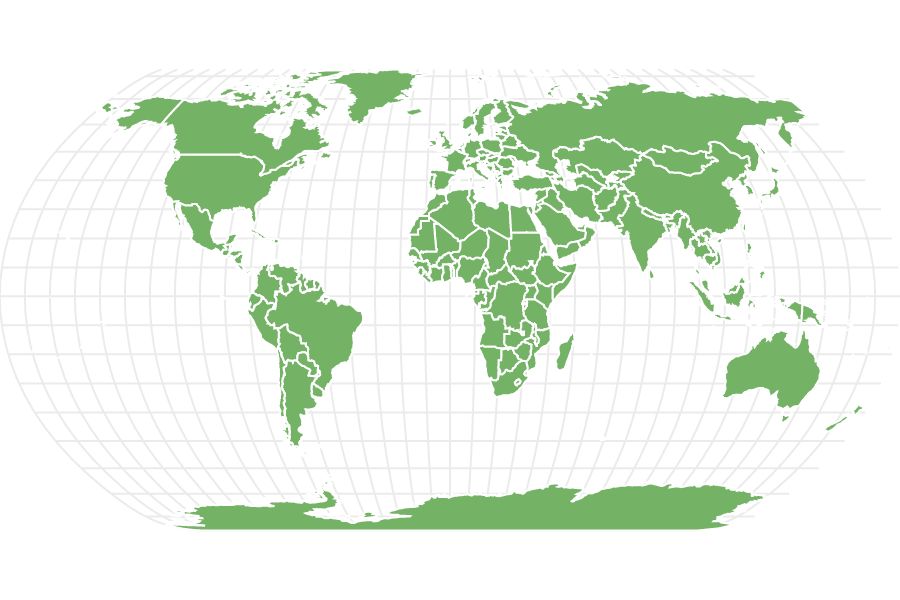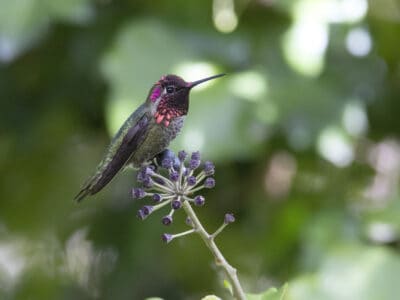Meganeura
Meganeura brongniarti
Mageneura was the largest insect that has ever lived. However, it wasn't the heaviest
Advertisement
Meganeura Scientific Classification
- Kingdom
- Animalia
- Phylum
- Arthropoda
- Class
- Insecta
- Order
- Meganisoptera
- Family
- Meganeuridae
- Genus
- Meganeura
- Scientific Name
- Meganeura brongniarti
Read our Complete Guide to Classification of Animals.
Meganeura Conservation Status

Meganeura Facts
- Prey
- Insects, small amphibians, and vertebrates
- Fun Fact
- Mageneura was the largest insect that has ever lived. However, it wasn't the heaviest
- Biggest Threat
- Low atmospheric concentration of oxygen
- Most Distinctive Feature
- Wide wings with a massive network of veins
- Distinctive Feature
- Spined apendages for holding prey
- Other Name(s)
- Griffinfly
- Wingspan
- 2.5 ft (28 inches)
- Habitat
- Humid wetlands near freshwater
- Diet
- Carnivore
- Type
- Prehistoric insect
Meganeura Physical Characteristics
- Weight
- Over 1 lb (450 g)
- Length
- 1 foot 3 inches (15 inches)
- Venomous
- No
- Aggression
- Medium
View all of the Meganeura images!
Insects today are pesky little things you can swat away with your palm. But they weren’t always this way. Like many animals from the past, prehistoric insects used to be massive in size. One such gigantic insect was the Meganeura. Meganeura was a group of giant insects that lived from the Late Carboniferous to the Permian period. Closely related to present-day dragonflies, the Meganeura was significantly larger and had several unique features that differentiate them from its living relatives. Many scientists consider the Meganeura to be the largest insect that has ever lived.
Description and Size
Meganeura is an extinct genus of giant insects that lived during the Carboniferous and Permian period. It was one of the largest flying insects ever to exist. The name translates as “large veins,” a reference to the network of veins that supported the insect’s wings like a skeleton and supplied oxygen.
Meganeura lived approximately 300 million years ago. This giant insect and others like it were generally referred to as griffinflies—an extinct order of insects otherwise known as Meganispora. The dragonflies may be the closest description of what the Meganeura might have looked like. It had a long slender body with bulging eyes that were enlarged relative to the rest of its body.
The wingspan of the massive dragonfly has been estimated to be about 25.6 to 28 inches (65-70 cm). Their wings were crisscrossed with a network of veins. Even though they are similar to present-day dragonflies, they were significantly larger and more robust. 300 million years ago, oxygen was 35% of the atmospheric composition. So, scientists believe this contributed to the incredibly large size of the Meganeura.
One of their most prominent features is the presence of spines on their large appendages. While the purpose of these spines is not fully known, scientists think they might have served as some trap for catching prey. However, it is also possible that Meganeura used them for mating and anchoring.
It is important to note that even though this insect had the largest wingspan of any known insect, their bodies were not really heavy. Their weight was lighter than that of many living beetles today. They weighed over 1 lb (450 g).
Diet — What Did Meganeura Eat?
Meganeura was an obligate carnivore with highly evolved bulging eyes, sharp chewing mouthparts, and a diverse diet. The large eyes allowed the massive insect to search for prey. Also, given its enormous size, it could pick from a wide variety of insects and eat small amphibians and other vertebrates. At the time, amphibians, like frogs and toads, were still getting used to a more terrestrial lifestyle. This would have made it easy for the Meganeura to catch and prey on them.
Like present-day dragonflies, Meganeua probably loitered around the edges of streams, ponds, and other water bodies where prey was abundant. Meganeura existed long before birds and bats came on the scene. This means it was the most prominent aerial predator at the time.
Habitat — When and Where It Lived
Meganeura evolved during the late Carboniferous period until its extinction in the Permian period about three hundred million years ago. It dominated the earth for millions of years before the dinosaurs came on the scene. Like modern carnivorous insects, it lived near freshwater and thrived in humid wetlands. The insect existed in a time when marine life flourished, and so it was found near the edge of bodies of water, such as streams and ponds in the massive equatorial warm forests that covered the center of France.
Meganeura — Threats and Predators
Meganeura was a top predator of its time. A lack of flying predators at the time allowed this insect to rule the skies for millions of years and is one of the main reasons they grew so large.
Discoveries and Fossils — Where It was Found
Paleontologists discovered the first Meganeura fossils in 1880 in Late Carboniferous coal deposits near Coventry in France. It would take five years for scientists to name the creature. Eventually, a French paleontologist Charles Brongniart dubbed it Meganeura in 1885.
In 1979, they found another fossil in Bolsover, Derbyshire. The first fossil of the Meganeura is housed in the National Museum of Natural History in Paris, France. Despite the massive size of these griffin flies, fossils of this group of prehistoric insects are poorly preserved.
Extinction — When Did It Die Out?
Meganeura became extinct at the end of the Permian period about 250 million years ago. The Permian extinction memorably wiped out 90% of the earth’s species. Changes in atmospheric conditions were the major cause of this event. Scientists suggest that the fall of oxygen’s composition (to 21%) in the air relative to what it was 300 million years ago made the Meganeura go extinct.
Similar Animals to Meganeura
Other insects similar to the Meganeura include:
- Meganeuropsis permiana: Like Meganeura, this dragonfly-like insect lived in North America during the Permian period and had a wingspan of up to 28 inches. It is one of the largest insects that ever lived.
- Bohemiatupus: This is an extinct genus of griffinfly that lived during the Carboniferous period. Adults might have had a wingspan of up to 20 inches.
- Anomalocaris: Anomalocaris is an extinct genus of shrimp-like arthropods that lived during the Cambrian period.
Related Animals
View all 164 animals that start with MMeganeura FAQs (Frequently Asked Questions)
When was Meganeura alive?
Meganeura was a large insect that evolved towards the end of the Paleozoic age. Specifically, it lived during the Carboniferous and Permian periods about 300 million years ago.
How big was Meganeura?
Meganeura was one of the largest insects that have ever lived. The wingspan of the Meganeura was about 25.6 to 28 inches (65-70cm). It weighed approximately 1lbs (450g)
What did Meganeura eat?
Meganeura was carnivorous. It mainly ate insects, small amphibians, and vertebrates. The giant insect had long spiny legs which were used to hold on to prey.
Thank you for reading! Have some feedback for us? Contact the AZ Animals editorial team.
Sources
- Evolution of Life, Available here: https://eweb.furman.edu/~wworthen/bio440/evolweb/carboniferous/mega.htm
- Geology In, Available here: https://www.geologyin.com/2018/01/the-largest-insect-ever-existed-was.html?m=1
- Prehistoric Wildlife, Available here: http://www.prehistoric-wildlife.com/species/m/meganeura.html
- Scientific Reports / André Nel, Jakub Prokop, Martina Pecharová, Michael S. Engel & Romain Garrouste , Available here: https://www.nature.com/articles/s41598-018-30629-w
















